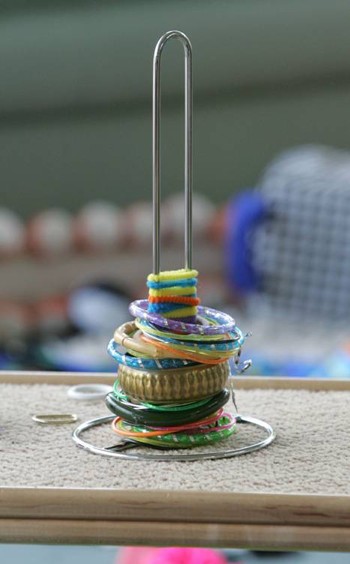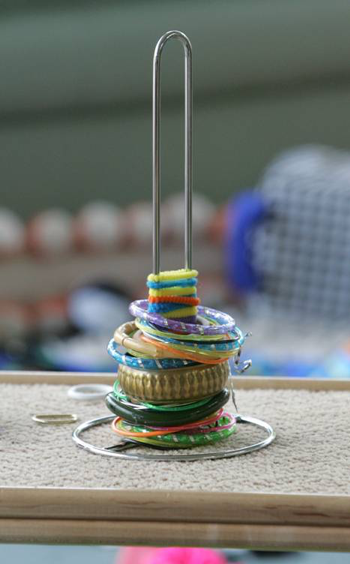3 purposeful play ideas for babies


From the moment they are born, babies are aware of their own physical needs for comfort and care. They know that their carers will make them feel safe, clean and warm. As they grow and develop, they begin to take an interest in the clothes that they wear and the objects that surround them. As babies have around 100 billion brain cells, it’s important to stimulate them. When you play with a baby, each cell is able to sprout up to 20,000 more routes for new information. So here are some purposeful play ideas for you to try with babies aged up to 1 year old, to keep those pathways developing.
1. Mirror, Mirror
This game supports the following learning opportunities:
- To support recognition and awareness of self
- To develop social contact with a familiar adult
- To develop attention and concentration
You will need:
- A quiet, comfortable area to sit in with cushions if required
- A large mirror, fixed in place if possible but, if not, securely positioned
How to play:
- Sit your baby in front of the mirror and tuck yourself behind him. Look into the mirror together. Talk about your baby’s face – “Look at Connor’s eyes”. As you speak, point to his eyes and gently stroke above them and beside them.
- Repeat with other features – “What a little nose” (gently stroke nose). Then repeat the words, this time covering the feature with your hand. “What a little… (pause, and as you reveal the feature, state the name) nose!”.
- Now draw his attention to his shoulders, tummy, chest and so on (depending on how long your baby is willing to sit!).
- Finally, turn his face to you and touch his nose, then invite him to touch your nose. Repeat with a few other features.
How to extend the play:
- Hold your hand up, move it towards the mirror and away again. Repeat with your feet. Ask your baby to help you to do the next hand and foot movements.
- Let him look at a teddy in front of him, behind him, and so on. Each time, let him touch and stroke his teddy. Gently hide the teddy and encourage him to look for it in the mirror.
2. Pipe Race
This game supports the following learning opportunities:
- To encourage enjoyment in the manipulation of objects
- To support the exploration of objects in interesting ways
- To develop co-ordination of motor skills and hand movements
You will need:
- Three lengths of plastic pipe, either attached at angles to a wall or taped to a chair or table leg at a height your baby can reach (the idea is objects should be able to roll down and out of the pipes)
- A basket of items that will fit through the pipes and a few items that will not fit (please ensure the items are safe for babies – ie. non-choking hazards)
How to play:
- Sit your baby beside the lengths of pipe. Offer her one of the items such as a ball or a soft toy.
- Encourage her to put it into one of the pipes, by pointing to the opening at one end. Alternatively, take an item and ask her to watch while you make it disappear.Exclaim when it appears at the other end!
- Repeat the activity as often as your baby wants to participate. Name each item that she chooses and count while she lifts it, making appropriate noises as the item travels and stops.
How to extend the play:
- Offer your baby a few items that do not fit in one pipe but do in another, and let her try them out. Encourage her to watch while you attempt to drop some items.
- Turn an old transparent plastic bottle into a pipe (ensuring any sharp edges are safely covered with tape). Encourage her to watch the item moving through the pipe.
- Join two sets of bottles together to make two long pipes. Send a ball through each pip to see which one gets to the other end first!
3. Ring Around
This game supports the following learning opportunities:
- To develop more accurate finger control
- To encourage imitation
- To develop hand-eye co-ordination
You will need:
- A baby stacking ring
- Mug tree
- Kitchen roll holder
- A basket with curtain or napkin rings (maybe use a mix of wooden, plastic and metal for sensory exploration and investigation)
How to play:
- Place the mug tree on a low surface. Place the basket containing the rings beside it.
- Place a ring on the mug tree and continue to choose rings, placing them on the tree until your baby attempts to copy.
- Offer a ring to him and help him to place it on the tree. Continue with this until the mug tree is full. Repeat the game using the kitchen roll holder and the baby stacking ring.
How to extend the play:
- On a long board (wooden, stiff card or plastic) place some hooks (fixed by tape or other method). Place a napkin ring on each hook and invite your baby to take them off. Encourage him to place them on again.
- Put a ring on each of your fingers and invite your baby remove each ring. Next, place some rings on his fingers (if he’s happy for you to do so) then let him take them off.

Place some rings on your toes and repeat on your baby’s toes if he likes it.